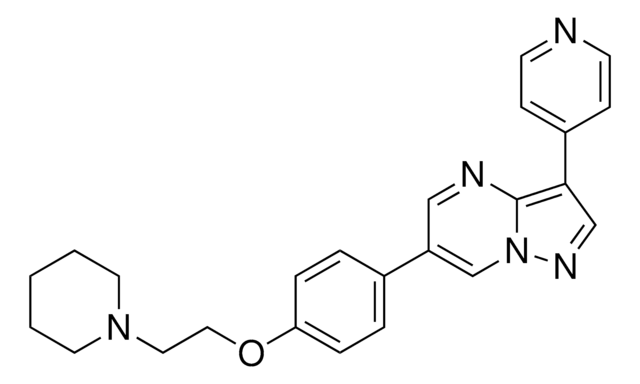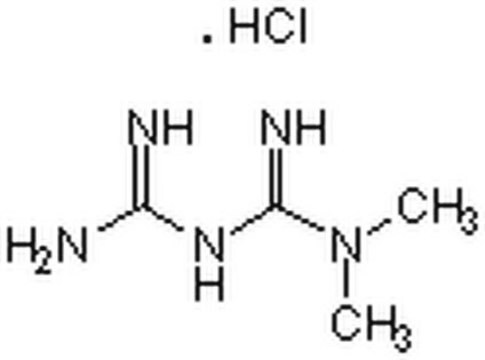Wichtige Dokumente
M0696
Anti-MNK2 (N-terminal) in Kaninchen hergestellte Antikörper

~1.0 mg/mL, affinity isolated antibody, buffered aqueous solution
Synonym(e):
Anti-GPRK7, Anti-MAP kinase interacting serine/threonine kinase 2, Anti-MKNK2
About This Item
Empfohlene Produkte
Biologische Quelle
rabbit
Qualitätsniveau
Konjugat
unconjugated
Antikörperform
affinity isolated antibody
Antikörper-Produkttyp
primary antibodies
Klon
polyclonal
Form
buffered aqueous solution
Mol-Gew.
antigen ~50 kDa
Speziesreaktivität
rat (predicted), human, mouse (predicted)
Erweiterte Validierung
recombinant expression
Learn more about Antibody Enhanced Validation
Konzentration
~1.0 mg/mL
Methode(n)
immunocytochemistry: 2-5 μg/mL using paraformadehyde fixed HEK-293T cells transfected with human MNK2
immunoprecipitation (IP): 2-4 μg using lysates of HEK-293T cells transfected with human MNK2
indirect immunofluorescence: suitable
western blot: 1-2 μg/mL using lysates of HEK-293T cells transfected with human MNK2
UniProt-Hinterlegungsnummer
Versandbedingung
dry ice
Lagertemp.
−20°C
Posttranslationale Modifikation Target
unmodified
Angaben zum Gen
human ... MKNK2(2872)
mouse ... Mknk2(17347)
rat ... Mknk2(299618)
Allgemeine Beschreibung
Immunogen
Anwendung
Physikalische Form
Haftungsausschluss
Sie haben nicht das passende Produkt gefunden?
Probieren Sie unser Produkt-Auswahlhilfe. aus.
Lagerklassenschlüssel
10 - Combustible liquids
Flammpunkt (°F)
Not applicable
Flammpunkt (°C)
Not applicable
Persönliche Schutzausrüstung
Eyeshields, Gloves, multi-purpose combination respirator cartridge (US)
Hier finden Sie alle aktuellen Versionen:
Analysenzertifikate (COA)
Leider sind derzeit keine COAs für dieses Produkt online verfügbar.
Wenn Sie Hilfe benötigen, wenden Sie sich bitte an Kundensupport
Besitzen Sie dieses Produkt bereits?
In der Dokumentenbibliothek finden Sie die Dokumentation zu den Produkten, die Sie kürzlich erworben haben.
Unser Team von Wissenschaftlern verfügt über Erfahrung in allen Forschungsbereichen einschließlich Life Science, Materialwissenschaften, chemischer Synthese, Chromatographie, Analytik und vielen mehr..
Setzen Sie sich mit dem technischen Dienst in Verbindung.







